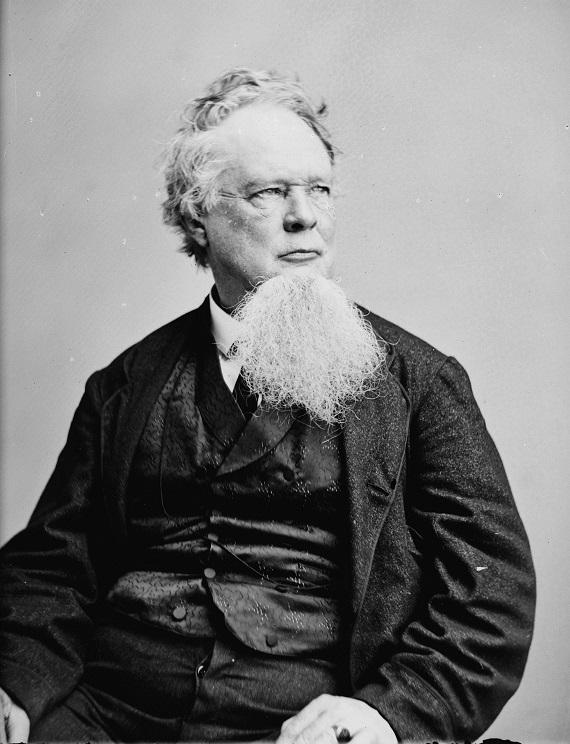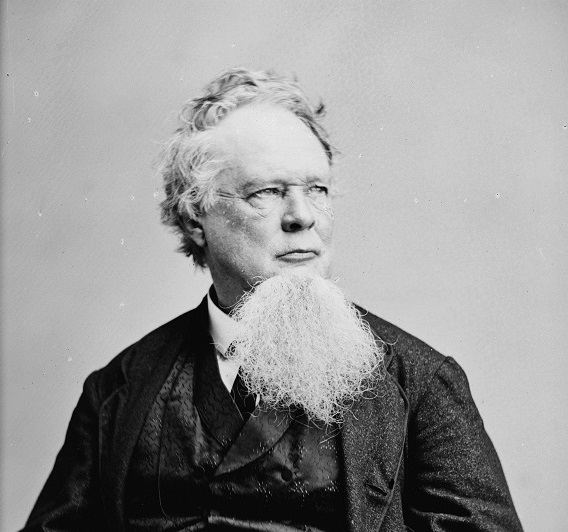This piece was originally published on the Canada Free Press.
Much to the annoyance of multiculturists, Christmas is still America’s most celebrated holiday, and in the weeks preceding this festive time, traditional Christmas stories will appear on television screens. We can expect to see numerous versions of Charles Dickens renowned tale, A Christmas Carol, O.Henry’s The Gift of the Magi,and Sherlock Holmes enthusiasts like myself look forward to adaptations of Conan Doyle’s The Adventure of the Blue Carbuncle.
As much as I enjoy these holiday offerings, my Christmas season would not be complete without a reading of William Gilmore Simms’ novel The Golden Christmas. Simm’s sensitive portrayals of his old South and its people make for enjoyable reading. Unfortunately, because Simms portrays aspects of the antebellum South in a favorable light, we shouldn’t expect to see television or movie depictions of The Golden Christmas any time soon, the entertainment industry’s principles have been radically compromised by political trends in the decades since Gone With the Wind was filling movie theaters. But the absence of filmed adaptations of Simms’ stories is of no concern, because reading the originals always yields more to the imagination than any re-scripted cinematic version can.
In A Christmas Carol , Charles Dickens offers a socially sanctioned version of a Christmas story. – A wealthy entrepreneur feels such remorse over how he attained his comfortable financial status, that he seeks to assuage his guilt through the altruistic act of assisting a needy family. However, William Gilmore Simms was not presenting a morality play with The Golden Christmas. As a Charlestonian who personally witnessed events he writes about, Simms uses his skills and humor as an author to capture the flavor of his beloved city, exactly as it was in the 1850s. – He recorded that special historic moment in time before it was lost forever.
Indeed, Simms was concerned that the memory of those times would slip away. He describes them as ” tokens and trophies of the past…which have not entirely passed away. But these tokens no longer exhibit the usual vitality, though they retain the familiar form. Their traces may be likened to the withered rose leaves in your old cabinet, that still faintly appeal to the senses, but rather recall what they cannot restore, and pain you by the contrasts they force upon you, rather than compensate you by their still lingering sweetness.”
Although Simms’ dialogue is in the vernacular of his time, the book is an easy read. His characters walk to their destinations, go about on horseback, or ride in horse drawn carriages. Simms takes us on a shopping trip through the city of Charleston exactly as it was in the 1850s. We move along King Street and Queen Street, stopping to browse through Kerrisons, the famous department store. And, of course, our itinerary includes John Russell’s renowned bookstore, a shop that sells not only books but also paintings and statuary.
The Golden Christmas depicts the pleasures of the Christmas season as Charleston’s aristocracy enjoyed it. The aristocrats Simms portrays could have been based on acquaintances, and he brings to life not only their manners, morals and fashions, but also their foibles and shortcomings. The genteel Southern belle and the classic Southern gentleman become a lowcountry Romeo and Juliet in the Charleston of Simms’ time. As in Shakespeare’s play, the young couple seems ill-fated, being from long-feuding families; he is a member of the English Bulmer family and she belongs to the French Huguenot Bonneau family.
Interestingly, Bonneau was also the surname of one of Charleston’s prominent black slave owners. Thomas Siah Bonneau was a black plantation master, whose slaves maintained his plantation and home. While many slave owners manumitted their slaves upon their death, Bonneau’s last will and testament decreed that all but three of his slaves should be sold to defray expenses and taxes; three slaves were to remain permanent bondservants of his widow.
Today we regard Christmas as a holiday primarily for children, with Santa Claus bringing gifts. But the festivities of the South Carolina Christmas season that Simms depicts were chiefly for adults. Kissing under the mistletoe and other, more grown-upamorous pursuits were a common practice during the Yuletide reveling. And, in accordance with the English tradition, there is the appearance of Father Chrystmasse, who was also associated with adult celebrations, encouraging merriment to celebrate Christ’s birth. – It was essentially the puritanical New Englanders that limited Christmas only to children; their feeling was that adults should avoid frivolity and conduct themselves in a sedate manner. Their celebrations featured the Dutch Saint Nicholas, instead of England’s Father Chrystmasse.
The Yuletide festivities in The Golden Christmas take place at the immense Bulmer baronial estate, that dates back to when South Carolina was still a colony. Invitations were sent to numerous families in the surrounding Lowcountry, as well as city dwellers and out-of-towners. The festivities continued for several days, with some guests staying overnight throughout its term, and others arriving on Christmas day.
Preparing for Yuletide festivities for such a large number of guests was quite a chore for the Bulmer family. Everyone was involved with cleaning, decorating, cooking, and baking; soon there were quantities of mince-pies, plum puddings, and other sweets. Before the guests began arriving, boxes of oysters were delivered from the city. Concocting the egg-nog, the big production of the Christmas season was still ongoing when guests began arriving. An enormous quantity of eggs was required – whites and yolks separated and later recombined – milk and sugar added, and finally Jamaican Rum and Cognac. Silver noggin bowls and punch cups were carried throughout the mansion, so guests could sample the exotic mixture that they would be enjoying throughout the holidays.
In the days preceding this special holiday, some of the men engage in an unusual wild Boar hunt, using only spears for thrusting while mounted on horseback. Their hunt is a success, and a large Boar’s head is procured to adorn the Christmas dinner table—The Boar’s head was the centerpiece of the traditional English Christmas dinner. Some of the stalwart guests will make carvings from the Boar’s head their Christmas dinner, while the more squeamish diners will restrict themselves to turkey and ham.
To make the holidays more enjoyable, violins provided music for cotillions and reels. The Noel celebrants were treated to a fireworks display, and certain guests entertain the others by performing a scene from The Tempest. On Christmas morning, an enormous cedar tree decorated with Christmas ornaments is unveiled, and Father Chrystmasse takes gifts from the tree and distributes them. The spirit of forgiveness generated by the Christmas season, mollifies the enmity between the Bulmer and Bonneau families, thereby removing the obstacle to the young couple’s marriage plans.
Before Christmas day ends, the tree is taken to the overseer’s house and that night Father Chrystmasse arrives and distributes gifts to the plantation’s negro staff. ( A couple of non-Southern guests were caught off guard, witnessing this unexpectedaspect of a plantation Christmas.) – Included in the assemblage receiving gifts were elderly, feeble and ailing negroes obviously unable to work for years, but still provided with food, clothing and shelter. – The caretaking provided for unproductive slaves conflicts with stereotypes, but was a common characteristic of plantation culture thatfew outsiders knew about.
Throughout W.G. Simms’ story we witness affable interactions between masters and bondservants. The negro housekeeper for the story’s narrator feels free to take issue with her master who frequently banters with her but never treats her with condescension. These same genial relationships are evident in the witty little vignette that Simms ends his story with: Major Bulmer convenes a mini-court in the overseer’s house to hear the case of a stolen pig. One slave claims that another slave has stolen one of his pigs. The Major evaluates the graphic and amusing testimony of both parties before rendering his judgment.
The characterizations in The Golden Christmas, as in other Simms’ stories, are consistent with the idiom of their time and place, so some aspects of his stories clash with today’s social mores. Consequently, William Gilmore Simms is largely spurned by the literary establishment, but his stories luckily have not been subjected to the ethnic cleansing that sterilized The Adventures of Huckleberry Finn, and the enduring songs of Stephen Foster.







